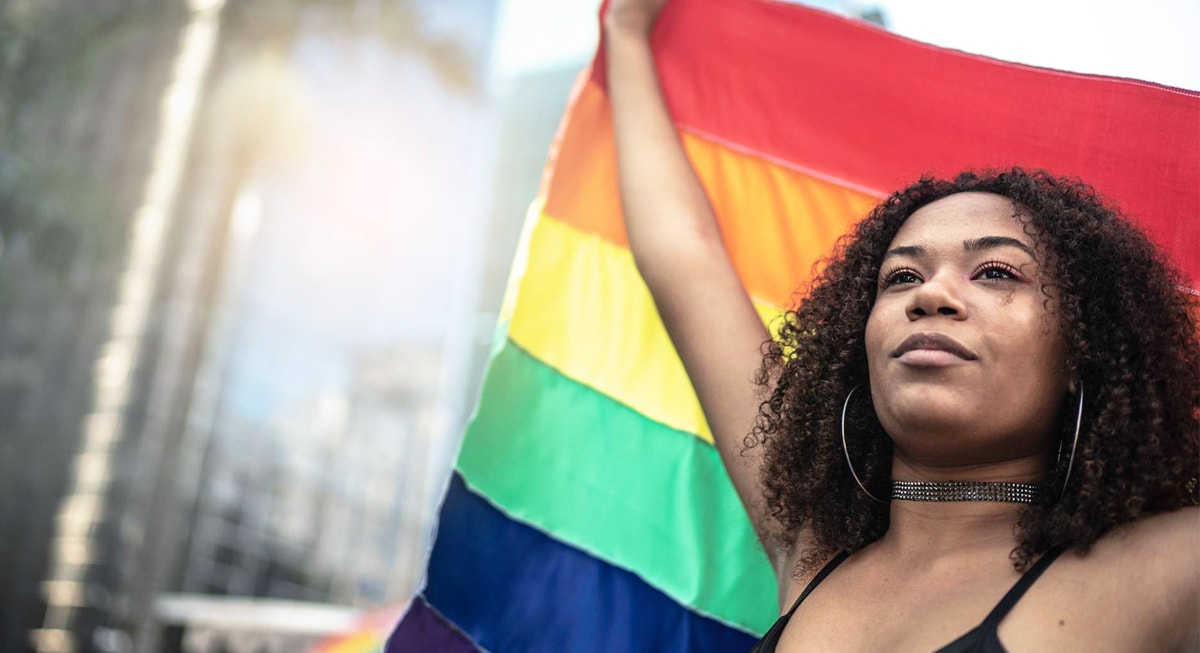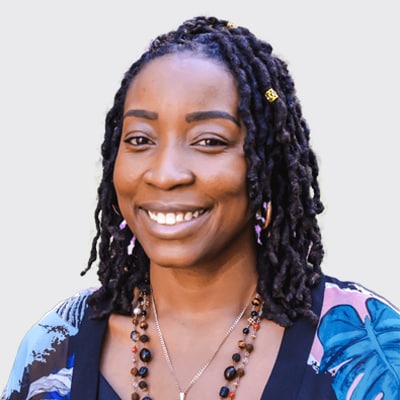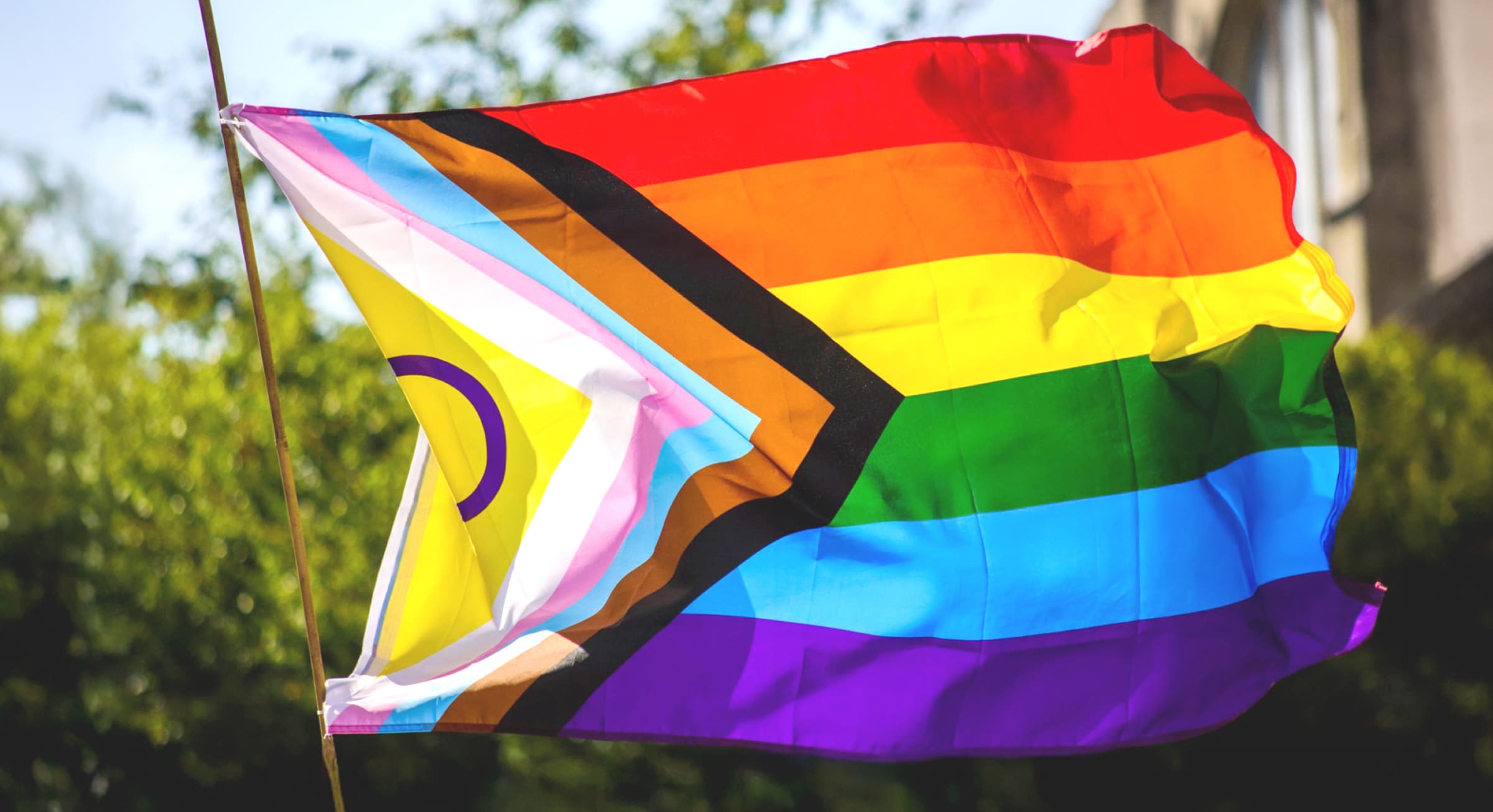Insights
May 2022
Celebrating, and Working for, Black and Trans Civil Rights

Far too many civil rights heroes’ names are unknown.
Consider Pauli Murray, a pioneering Black author, lawyer and civil rights activist. A legal scholar whose work directly influenced giants like Thurgood Marshall, Murray was widely acknowledged as the first Black woman to earn a J.S.D. from Yale. But despite a lifetime of groundbreaking achievements, Murray’s legacy has long gone underacknowledged.
When Murray entered law school at the height of the Jim Crow era in the 1940s, being openly LGBTQ was additionally dangerous. Yet while Murray never married legally, they maintained a relationship with fellow lawyer Renee Barlow for more than 30 years.
What’s more, Murray frequently indicated in their writings they possessed a “he/she personality” and unsuccessfully sought hormonal and surgical intervention. To recognize Murray’s shifting gender identity, the Pauli Murray Center for History and Social Justice uses he/him and they/them pronouns when discussing Pauli Murray’s early life and she/her/hers when discussing Dr. Murray’s later years.”
I mention Murray as we celebrate both Pride and Juneteenth this month, marking a pair of landmark events in US civil rights history that are inextricably intertwined.
An Intersection of Civil Rights
Every June, Pride month celebrates the LGBTQ+ community and importance of the community’s ability to live openly and authentically. The first Pride parade launched in New York City in 1970 as a response to the infamous Stonewall Riots on June 28 of the previous year. Since then, the political and social phenomenon has spread to cities around the world in a celebration of LGBTQ+ pride.
Juneteenth has an even longer history. It commemorates the June 19, 1865, announcement of the end of slavery in the state of Texas, marking the official end of legalized slavery in the US. While Juneteenth has been celebrated in Black communities for more than 150 years, in 2021 the day was finally established as a US federal holiday.
Only recently have Black LGBTQ+ historical figures begun to receive proper attention for their importance to intersectional civil rights work.
These landmark events celebrate civil and human rights victories for Black Americans as well as the Black LGBTQ+ community — groups that have fought, and continue to fight, for full equality. Both of these movements make us stronger as a global community.
Only recently have Black LGBTQ+ historical figures including Murray begun to receive proper attention for their importance to intersectional civil rights work. Think of artists and writers like James Baldwin, Langston Hughes and Lorraine Hansberry, or social and political activists like Stormé DeLarverie, Marsha P. Johnson, Bayard Rustin and Barbara Jordan. As these figures – many still hidden – continue to emerge, so do living activists and artists like Beverly Glenn-Copeland, Laverne Cox, Miss Major Griffin-Gracy and Kehinde Wiley.
The Struggle Continues
For all of the cultural and political advances we mark this month, significant political backlash continues. In the last year alone, more than 200 pieces of anti-LGBTQ legislation have been introduced across the US, and race-based violence, economic inequality and challenges to cast a ballot continue to make headlines.
The workplace also presents challenges for Black LGBTQ+ workers, and studies are just beginning to reveal the scope of the problem. A 2021 Gallup poll revealed that one in four Black workers experience discrimination in the workplace. Meanwhile, a 2021 Bureau of Labor Statistics study revealed that across the board, transgender workers are paid 32% less than non-transgender workers.
Accountability and Action
The celebrations of Pride and Juneteenth can elevate both Black and LGBTQ+ communities. Whether addressing microaggressions, improving hiring and training practices or expanding DEI efforts, we all have a role to play as companies, managers and individuals working actively toward creating inclusive, diverse and equitable environments.
At State Street, we are committed to improving employee and vendor diversity and creating an inclusive environment with training for all employees. These efforts are rooted in our action plan, 10 Actions to Address Racism and Inequality, a living measurement of our accountability toward our goal of improving representation and engagement for employees who have been historically marginalized.
The saying goes that the arc of the universe is long and bending toward justice. But justice still requires time, effort and leadership — as well as an occasional celebration of how far we’ve come. This June, let’s celebrate Juneteenth and Pride with Pauli Murray in mind — perhaps by viewing the 2021 documentary My Name Is Pauli Murray, then committing ourselves to working for full equality for all.

Sharhea Wade
Vice President, Global Inclusion, Diversity & Equity (GIDE)
State Street
Related Resources


